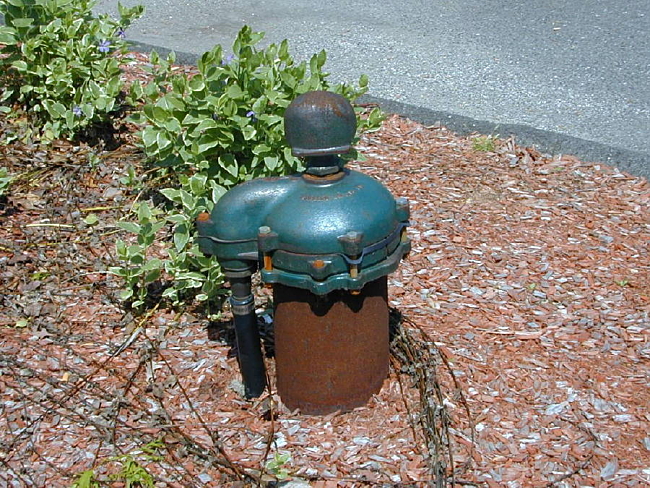On-Lot Potable Water Wells
On-lot potable water well is an excavation or structure created in the ground by digging, driving, boring, or drilling to access groundwater in underground aquifers. The well water is drawn by a pump, or using containers, such as buckets, that are raised mechanically or by hand.
There is a reason why bottled water is a big seller. Potable well water testing is relatively cheap and always a good idea. You can’t detect hazardous chemicals at low concentrations. Your laboratory can.
On-lot potable water wells can vary greatly in depth, water volume, and water quality. Well water typically contains more minerals in solution than surface water and may require treatment to soften the water. The minerals are introduced to the water through a permeable layer(s) in the ground that allows particulates to pass through. However, not just beneficial particulates can pass through this permeable layer(s). As such these wells are at a greater risk of contamination than a municipal drinking supply because of the permeable layer(s).
Hazardous contaminants such as petroleum, solvents, and heavy metals can percolate their way into the well. Contamination to the well may also occur because of environmental contamination that has occurred on adjacent or sometimes very distant properties in addition to having been localized to the property. Contamination to the well can result in both sickness and death of those that use it.
Drinking Water Well and Spigot Testing, Safe Drinking Water Act (SDWA amended 1986)
Federated Environmental offers generalized drinking water testing for a wide variety of parameters and specialized testing in accordance with the Safe Drinking Water Act (Public Law 99-339, June 19, 1986). All obtained samples are collected by trained personnel in accordance with federal EPA protocols, and delivered to a certified laboratory for analysis. Depending on the parameter(s) tested, the results are provided within fourteen (14) days of sample collection. The sample collection protocol used includes appropriate sample labeling, sample storage containers, sample preservation, shipping, Chain of Custody, and holding time observation. Although a wide variety of parameters are regularly tested by Federated Environmental, the most common parameters include the following:
- Volatile Organic Compounds (chlorinated and otherwise halogenated solvents, degreasers, rust penetrants, dry cleaning fluid, process chemicals, and certain gasoline constituents.
- Semi-Volatile Compounds (herbicides/pesticides, creosote, heavier fuels, tar-like substances, and others).
- Inorganic Compounds (cyanide, fluoride, sulfur, asbestos, and metals).
- Metals (RCRA 8 and Priority Pollutant Metals).
- Bacteriological Agents (Cryptosporidium, Giardia lamblia, Legionella, standard plate counts, total coliform, and others).
- Turbidity (Total Dissolved Solids, Total Suspended Solids).
- Biological Water Quality Parameters (pH, Biological Oxygen Demand, Total Dissolved Oxygen, Total dissolved Carbon Dioxide, Carbonate Hardness, Total Nitrates/Nitrites, Total Phosphates, Total Iron, Conductivity, and others).
Federated Environmental offers trained and certified personnel for the sample collection process. Samples are delivered to select laboratories that are certified at either the federal or state level to perform the needed testing. The results are provided with an explanation of the health concerns, if any, and recommendations on how best to manage the potential health hazard.
Multifamily Drinking Water Testing (Lead), Fannie Mae Protocols
Drinking water is one of the many sources of lead exposure. Although it does not usually cause the severe poisoning cause by lead paint or dust, drinking water is a common source of low level exposure. Ingestion of lead by infants, young children, or during pregnancy is of the most concern.
Lead in drinking water usually comes from lead solder, which was widely used until 1986 to connect copper (and sometimes galvanized) water pipes inside buildings. Lead solder may dissolve in the water, depending on how corrosive (acidic or basic) the water is, how long it sits in the pipes, and the age of the solder. If the water is relatively non-corrosive (as with most large water utilities), after 5 years the pipes are covered with a harmless, mineral scale, and lead usually stops dissolving. If the water is corrosive, as with many private wells, lead may continue to dissolve. A number of older buildings throughout the United States have a lead service connection between the building and the water main. This may also cause continuing problems. In most cases, allowing the plumbing to flush until a water temperature drop is noticed is sufficient to eliminate any lead accumulation related to standing water.
Federated Environmental offers drinking water testing in accordance with federal and state regulations, as well as specialized testing protocols such as required by Fannie Mae. Fannie Mae requires drinking water testing for lead in 10% of apartment units in an apartment complex, or a minimum of 10 samples, whichever is higher.
Groundwater Integrity Testing (all parameters)
In addition to drinking water testing, Federated Environmental offers groundwater testing for all of the same parameters tested for in drinking waters. In order to make a determination whether contamination exists on a property, or to determine is a property has been successfully remediated, it is necessary to test the groundwater for the known contamination. Groundwater samples can be taken from drinking water wells, monitoring wells, springs, pits, ponds, lagoons, and leachate or seeps areas. Federated Environmental offers these specific testing services as needed.
Many states differ in their regulation of groundwater contamination. The variation in regulations is usually associated with kind of contamination, kind of property, and location of property. Many states simply approach each contamination case and make judgments based on a risk assessment of the property’s condition, which includes the above factors among others. Federated Environmental has extensive experience in performing such risk-based assessments, and negotiating with regulatory agencies to determine the most cost-effective and expedient means to manage groundwater contamination problems. In some areas of the United States, significant groundwater contamination exists for many square miles (e.g., Phoenix, Arizona, Los Angeles, California, and others). Federated Environmental can develop and execute a specialized groundwater testing plan that will determine the identity, and thus the source, of contamination.
